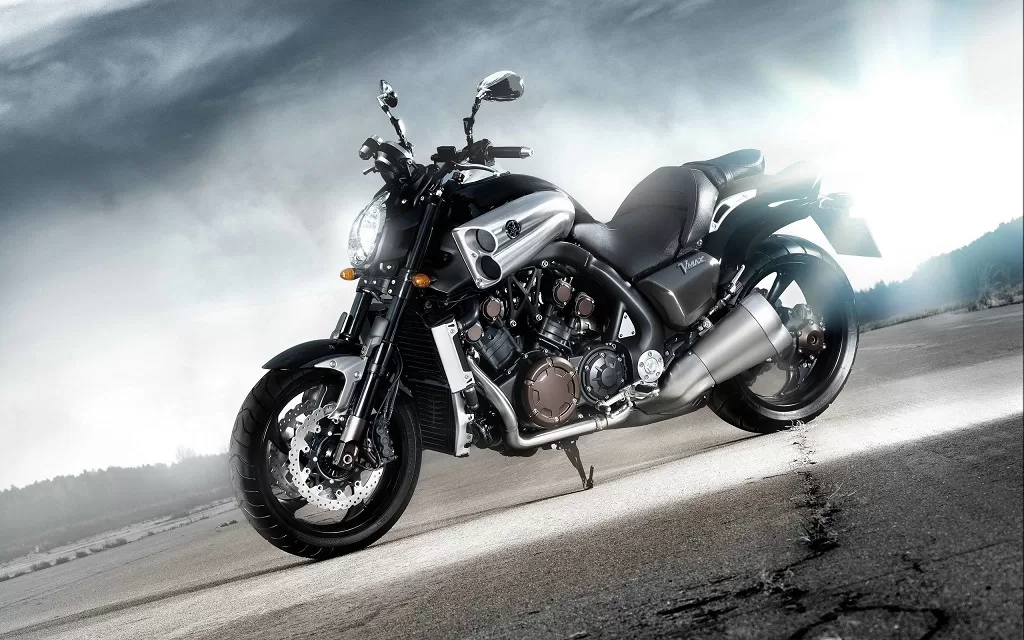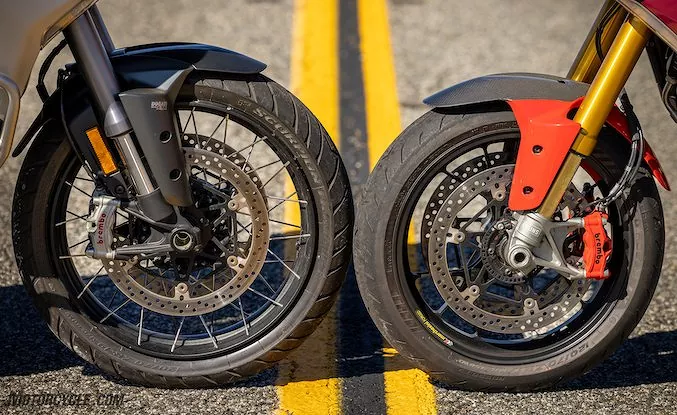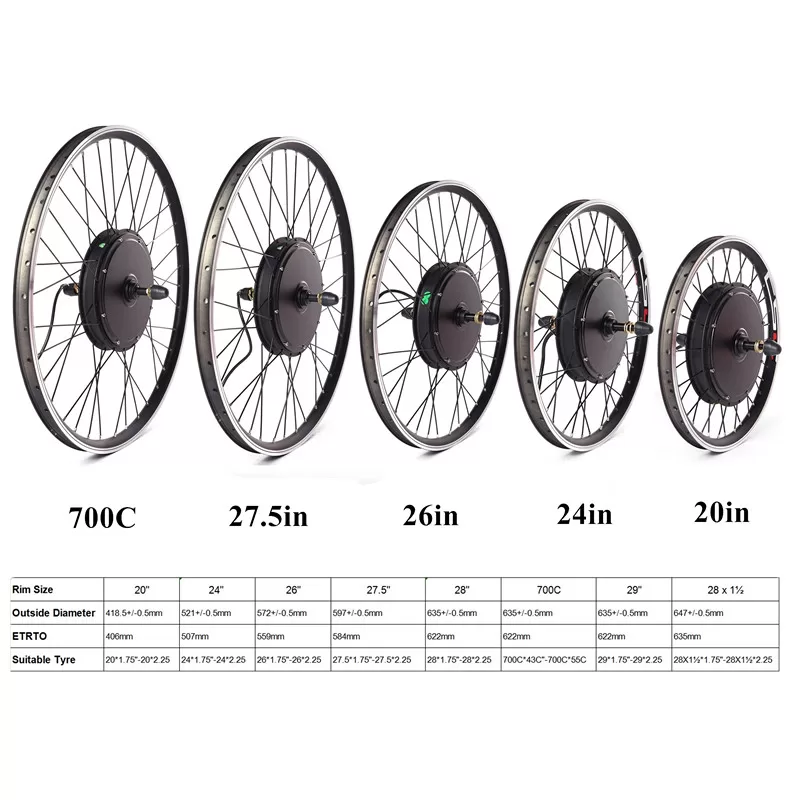
As one of the modern means of transportation, motorcycles are not only convenient, but also represent individuality and freedom. Many motorcycle enthusiasts, may want to customize or modify their motorcycles to express their style or improve performance. Among them, installing different wheels is a common modification method.

Yes, you can put different wheels on your motorcycle, but there are some factors you need to consider.
First, the wheels you choose must be compatible with your motorcycle’s make, model, and year. Some motorcycles have specific wheel sizes and bolt patterns, so it’s important to check these measurements before purchasing new wheels.
Second, you need to consider the type of riding you do. Different wheels are designed for different riding styles and terrains. For example, off-road wheels are typically larger and have deeper tread patterns to provide better traction and stability in muddy or rocky conditions. On the other hand, street-oriented wheels are usually smaller and lighter, providing better handling and acceleration on paved roads.
Third, you need to make sure the wheels you choose are made from high-quality materials and are built to last. Cheap wheels may look good initially, but they may not hold up well over time, leading to safety issues and frequent replacements.
Finally, you need to consider the cost. New wheels can be expensive, so it’s important to set a budget and stick to it. Shop around for the best deals and compare prices before making a purchase.
If you’re not sure which wheels are right for your motorcycle or how to install them, it’s best to consult with a professional motorcycle mechanic or dealership. They can help you choose the right wheels and ensure they’re installed correctly and safely.

Motorcycles are highly customizable vehicles, and changing the wheel size is one of the most common modifications done by riders. There are several reasons why someone might want to change the wheel size on their motorcycle, ranging from performance enhancements to personal aesthetic preferences.
The most significant reason for changing wheel size is to improve the motorcycle’s performance. Larger wheels typically have a larger contact area with the ground, which can provide better traction and stability, especially in high-speed riding or off-road conditions. Wider wheels can also distribute the weight more evenly, improving handling and reducing tire wear.
On the other hand, smaller wheels can sometimes provide better acceleration and braking due to their reduced rotating mass. They may also be lighter, which can be beneficial for motorcycles that require quick and nimble handling.
Many riders choose to change their wheel size for aesthetic reasons. Larger wheels, especially with a deep tread pattern and shiny finish, can give a motorcycle a more aggressive and sporty look. On the contrary, smaller wheels can contribute to a cleaner, more minimalist appearance.
Motorcycles are as much about expression as they are about transportation. Changing wheel size is one way riders can customize their bikes to reflect their personal style and taste. It’s a way to make a statement and stand out from the crowd.
Sometimes, riders may want to install aftermarket parts or accessories, such as new brakes or suspension systems, that require a different wheel size. Changing the wheel size may be necessary to accommodate these upgrades and ensure compatibility.
The type of riding a person does can also influence the choice of wheel size. For example, off-road riders may prefer larger wheels for better ground clearance and traction in muddy or rocky terrain. On the other hand, road riders may prefer smaller wheels for their lighter weight and improved handling on paved surfaces.
Changing wheel size on a motorcycle can provide various benefits, from performance improvements to personal customization. Whether it’s for aesthetic appeal, better handling, or to accommodate upgrades, wheel size modifications can be an important part of making a motorcycle more suitable for a rider’s needs and preferences. However, it’s crucial to ensure that the new wheel size is compatible with the motorcycle, meets safety standards, and is within the legal limits set by local regulations.

Changing the wheel size on a motorcycle can significantly affect its performance, handling, and appearance. However, before making such a modification, there are several crucial factors to consider. Here are four things you should think about before deciding to change your motorcycle’s wheel size:
The first and foremost consideration is compatibility and safety. Not all wheel sizes are suitable for every motorcycle model. You need to ensure that the new wheel size is compatible with your bike’s frame, suspension, and braking system. Installing incompatible wheels can lead to handling issues, decreased safety, and even damage to other components. Therefore, it’s crucial to consult with a professional or manufacturer to ensure the chosen wheel size is safe and suitable for your motorcycle.
Changing wheel size can significantly affect your motorcycle’s performance. Larger wheels may provide better traction and stability but can also increase rolling resistance and affect acceleration. On the other hand, smaller wheels may improve acceleration and braking but may handling issues. It’s essential to understand the potential performance impact of the new wheel size and determine if it aligns with your riding style and needs.
Before making any modifications to your motorcycle, it’s crucial to check your local legal regulations. Some areas may have specific laws or regulations regarding wheel size modifications. It’s important to ensure that your modified motorcycle complies with all legal requirements to avoid any legal issues or fines.

Finally, you need to consider the cost and maintenance implications of changing wheel size. New wheels can be expensive, and you may also need to invest in new tires, wheel bearings, and other related components. Additionally, larger wheels may require more frequent tire rotations and balancing, adding to the overall cost of ownership. Make sure you factor in these costs and consider them within your budget.
In conclusion, changing wheel size on a motorcycle can be a significant modification that requires careful consideration. It’s essential to ensure compatibility and safety, understand the performance impact, comply with legal regulations, and factor in the cost and maintenance implications. By taking these factors into account, you can make an informed decision that aligns with your riding style, needs, and budget.
Join our mailing list to be the first one to know more new parts release and marketing info. Stay informed!


We will contact you within 1 working day, please pay attention to the email “wholesale@mpm-motorsports.com”
Comments